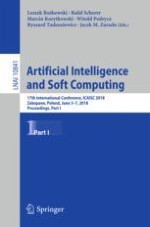2018 | OriginalPaper | Buchkapitel
Observation of Unbounded Novelty in Evolutionary Algorithms is Unknowable
verfasst von : Eric Holloway, Robert Marks
Erschienen in: Artificial Intelligence and Soft Computing
Aktivieren Sie unsere intelligente Suche, um passende Fachinhalte oder Patente zu finden.
Wählen Sie Textabschnitte aus um mit Künstlicher Intelligenz passenden Patente zu finden. powered by
Markieren Sie Textabschnitte, um KI-gestützt weitere passende Inhalte zu finden. powered by
